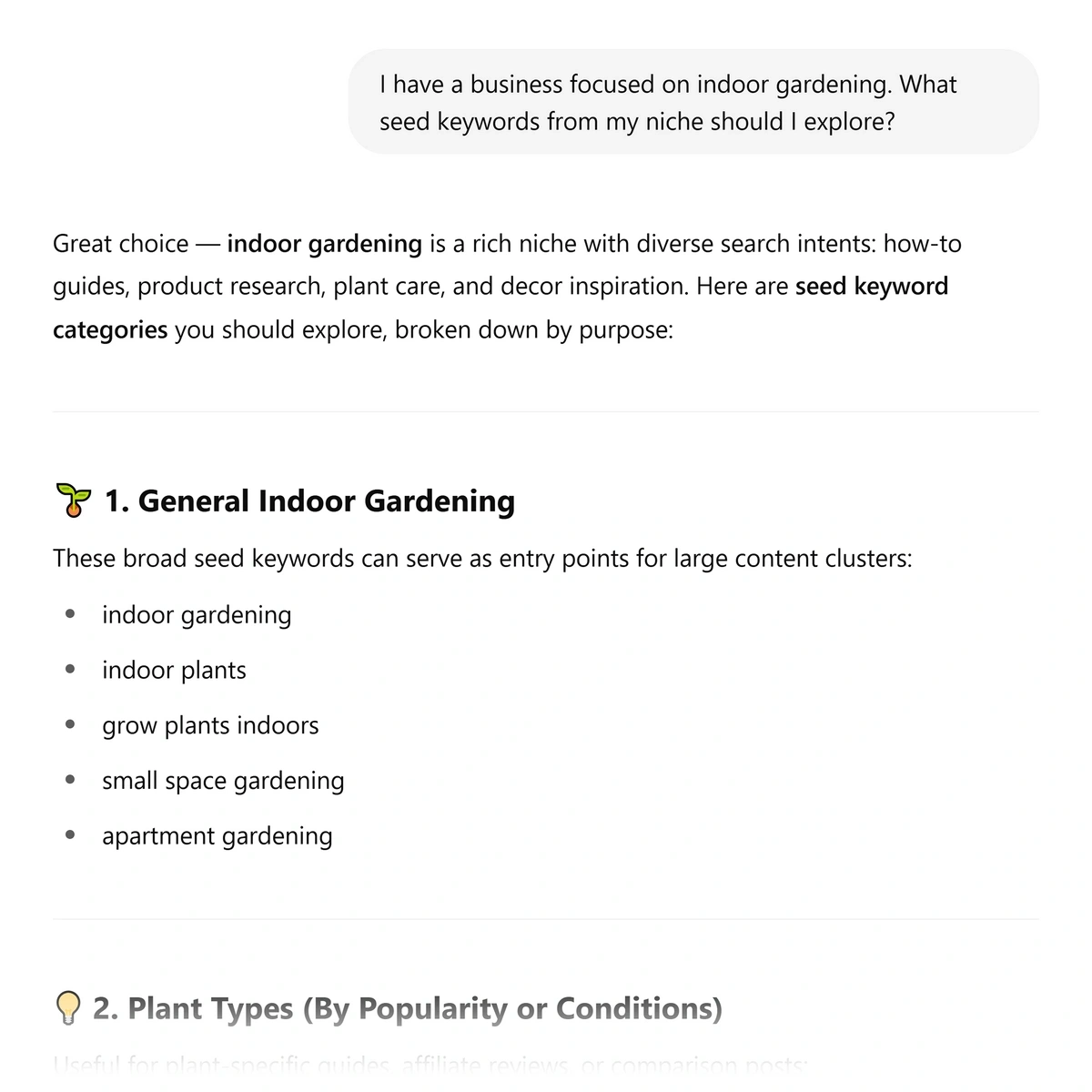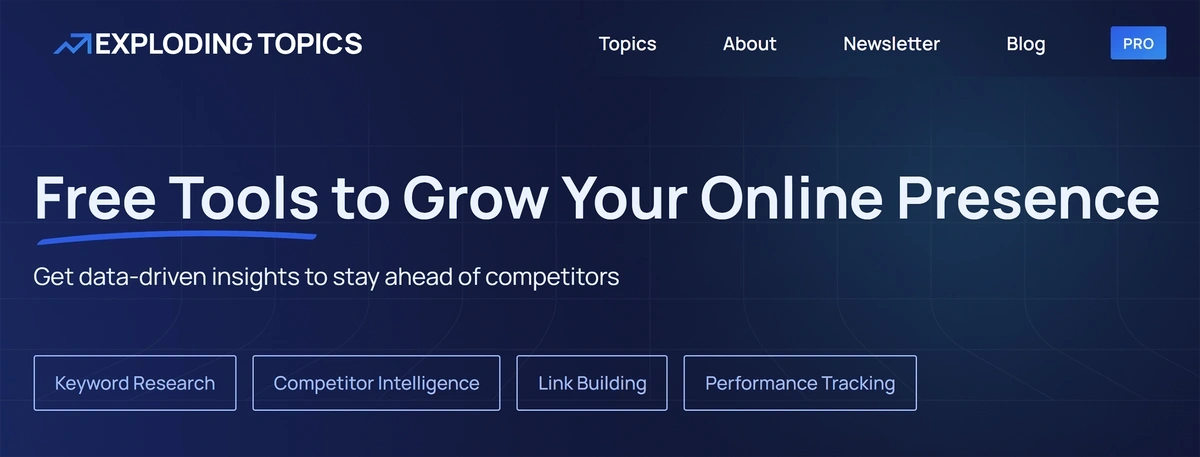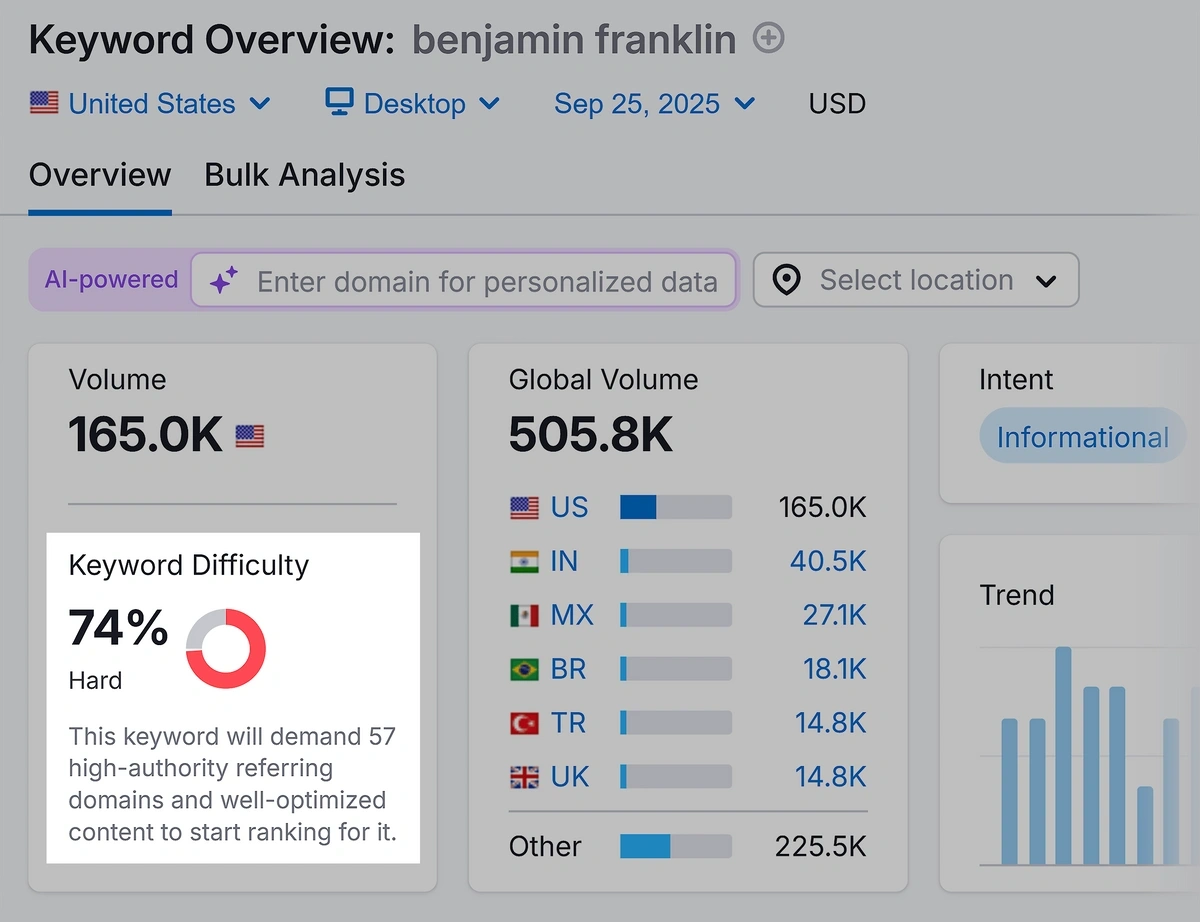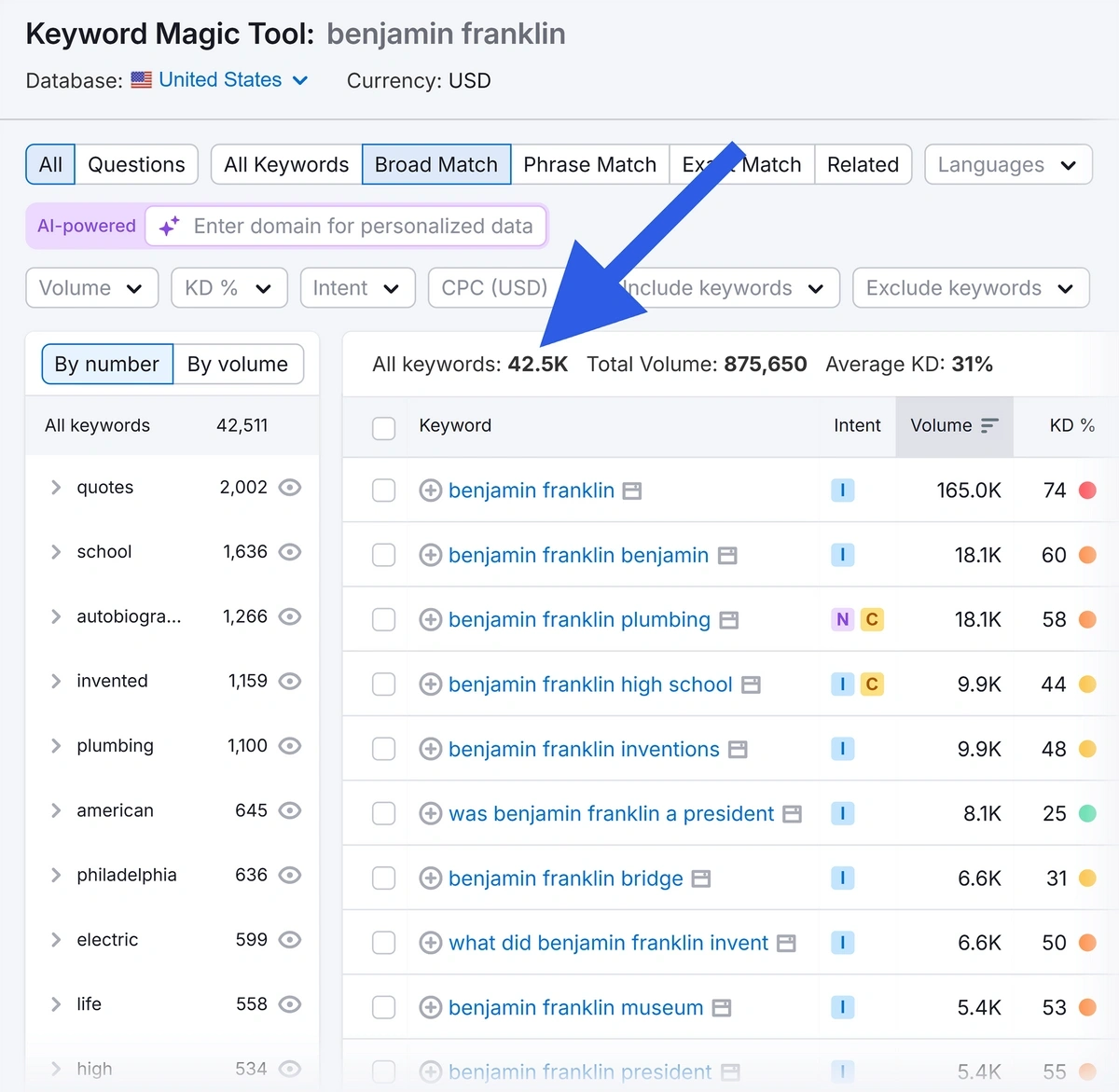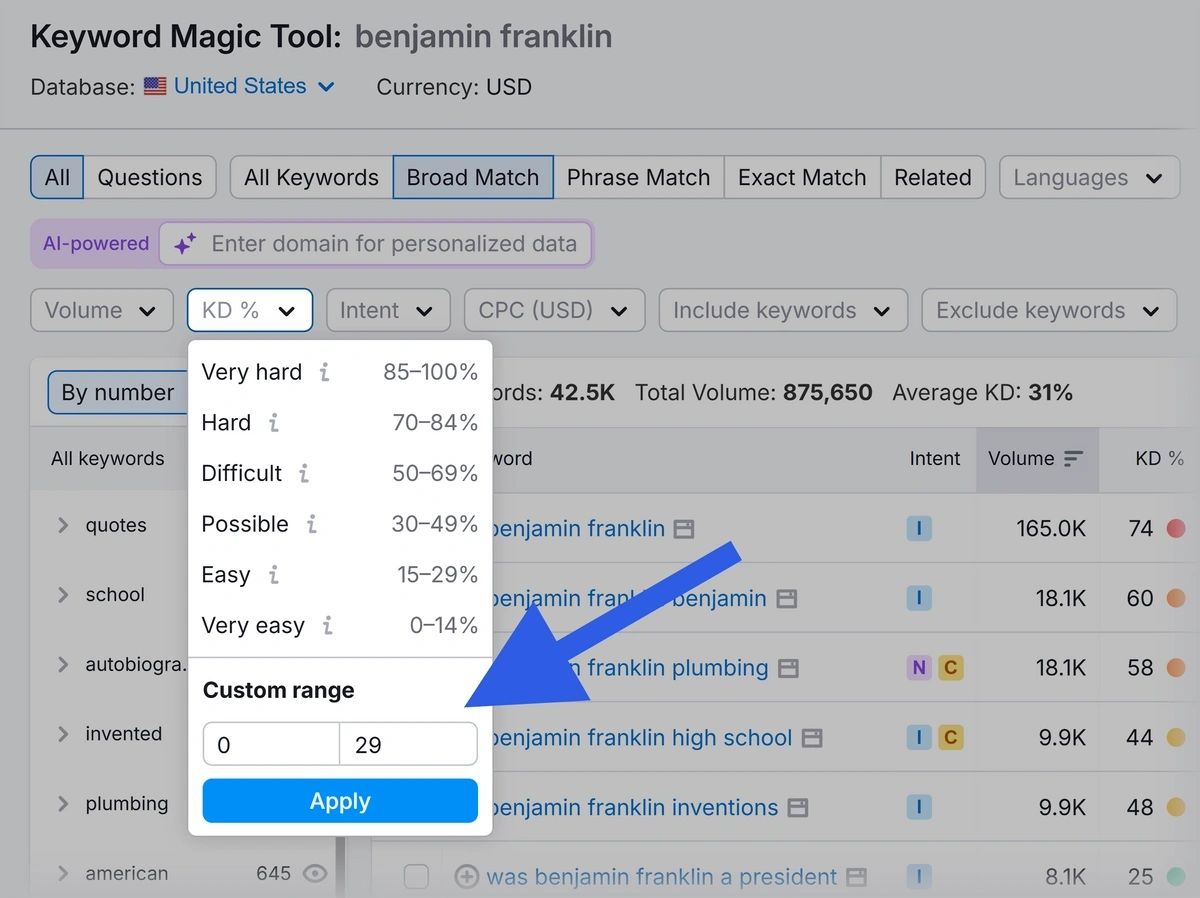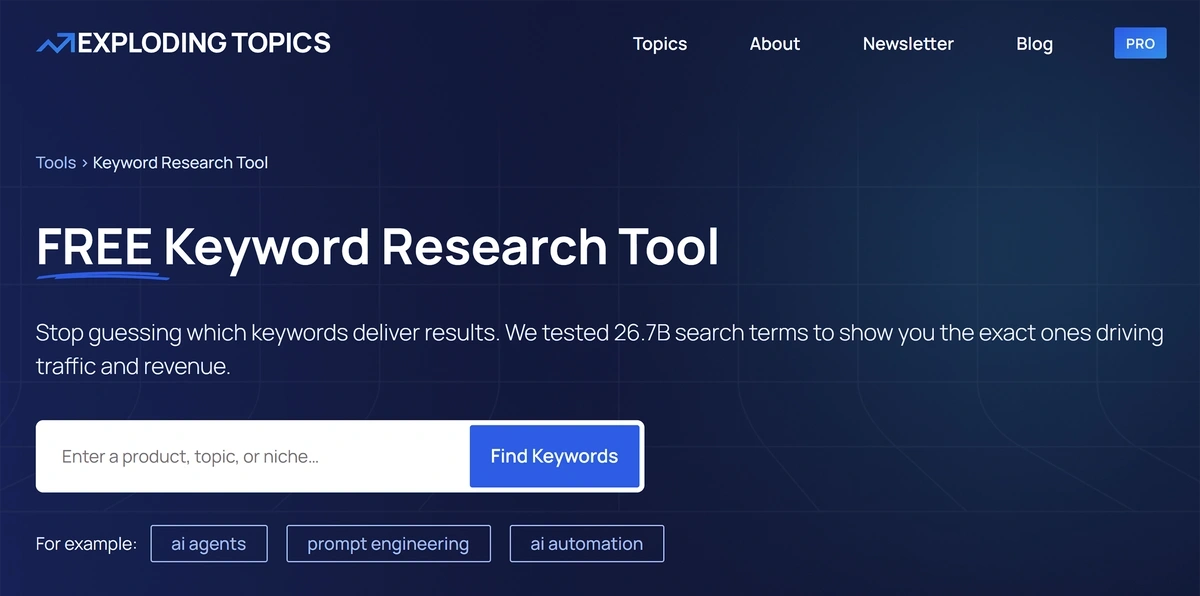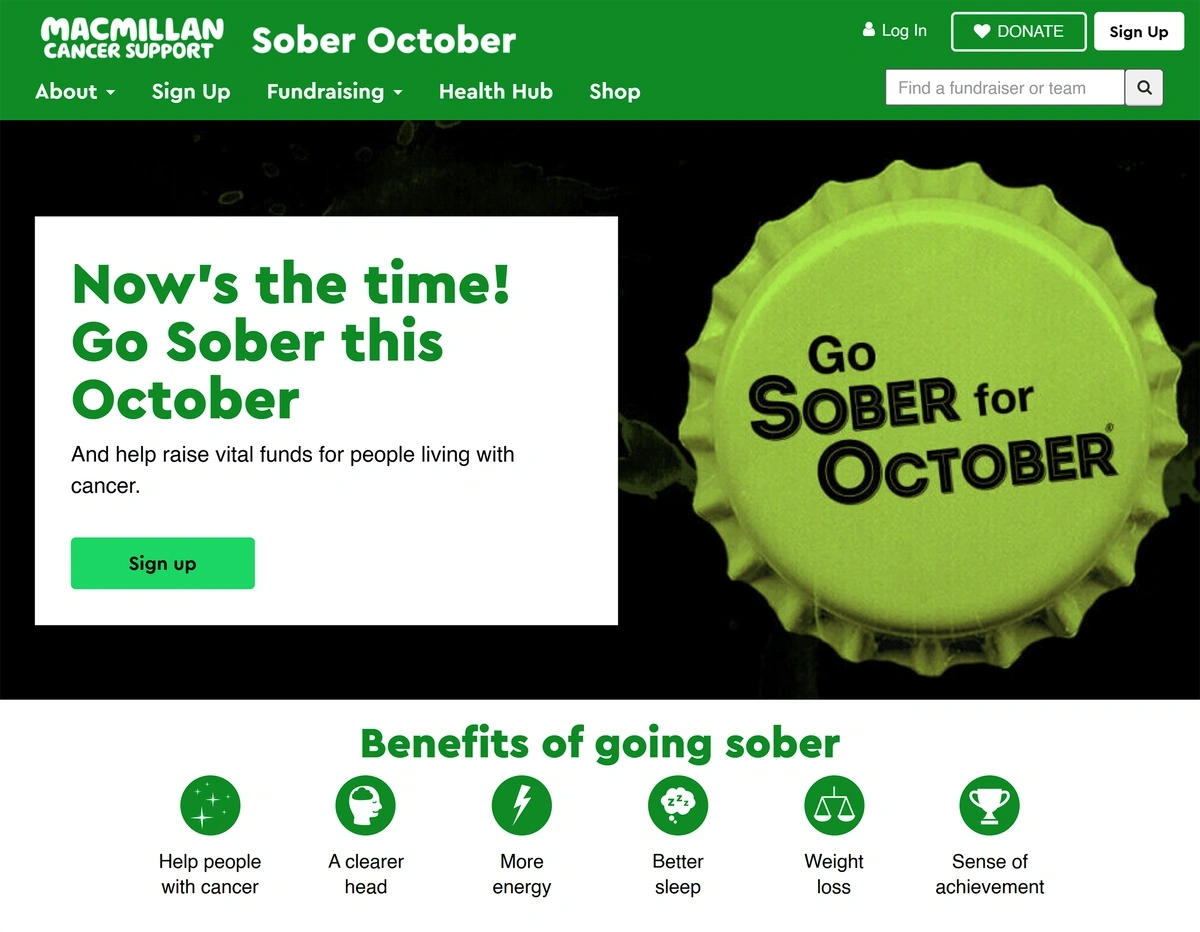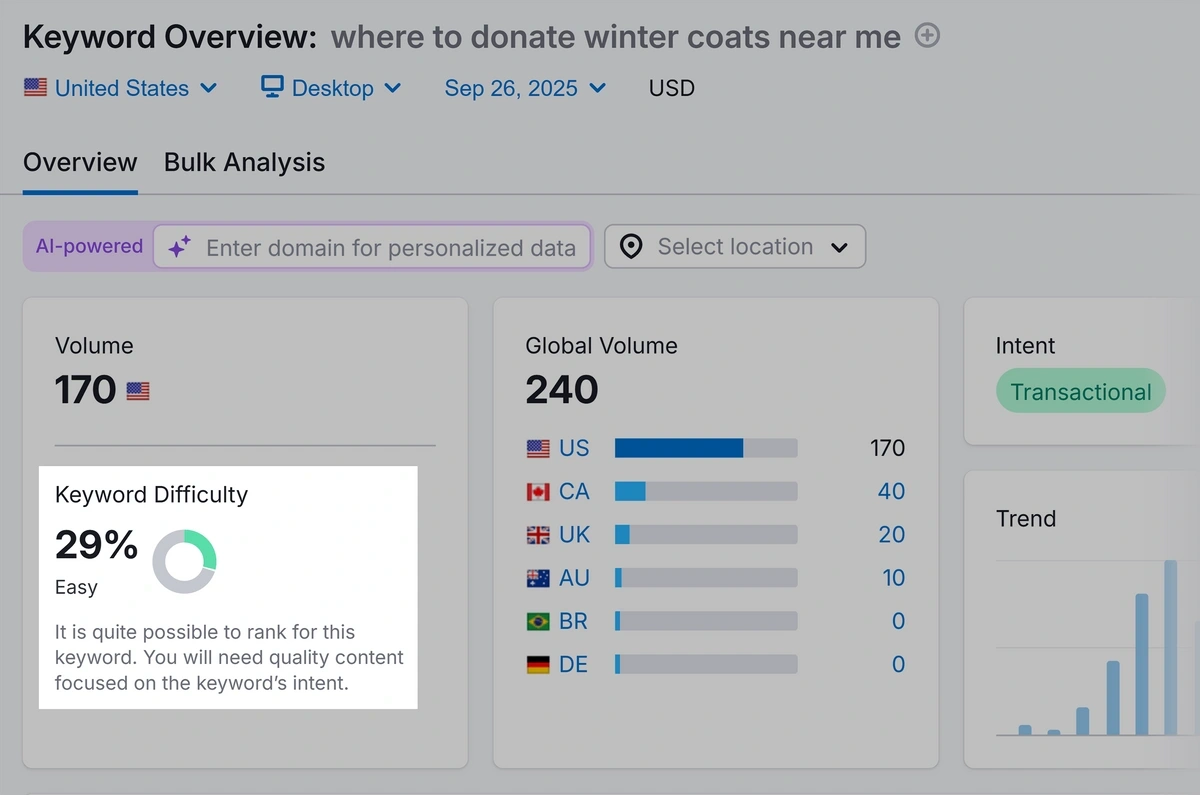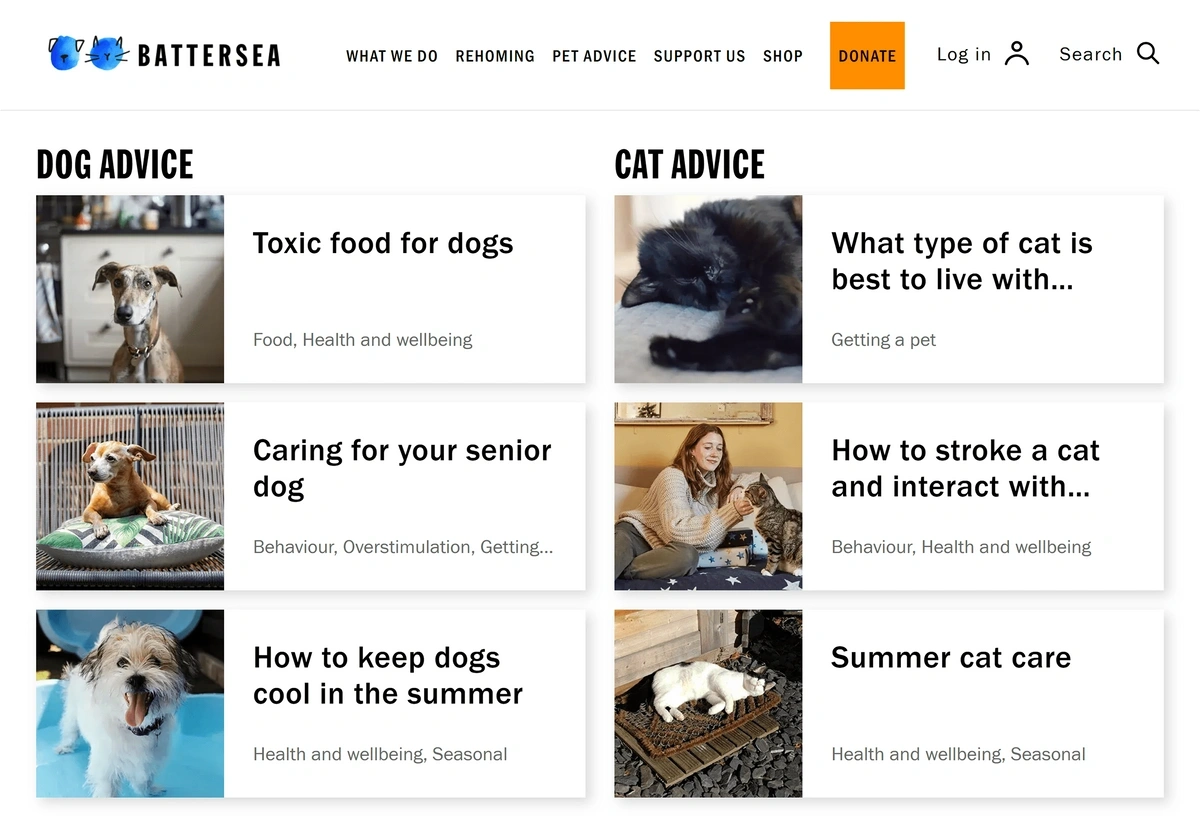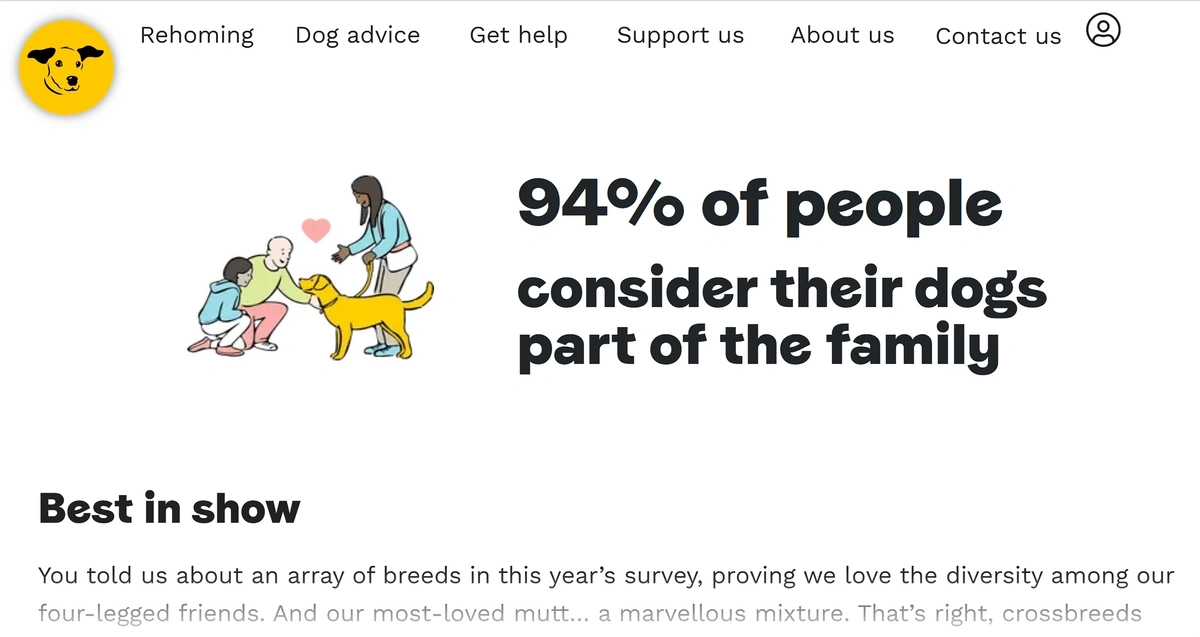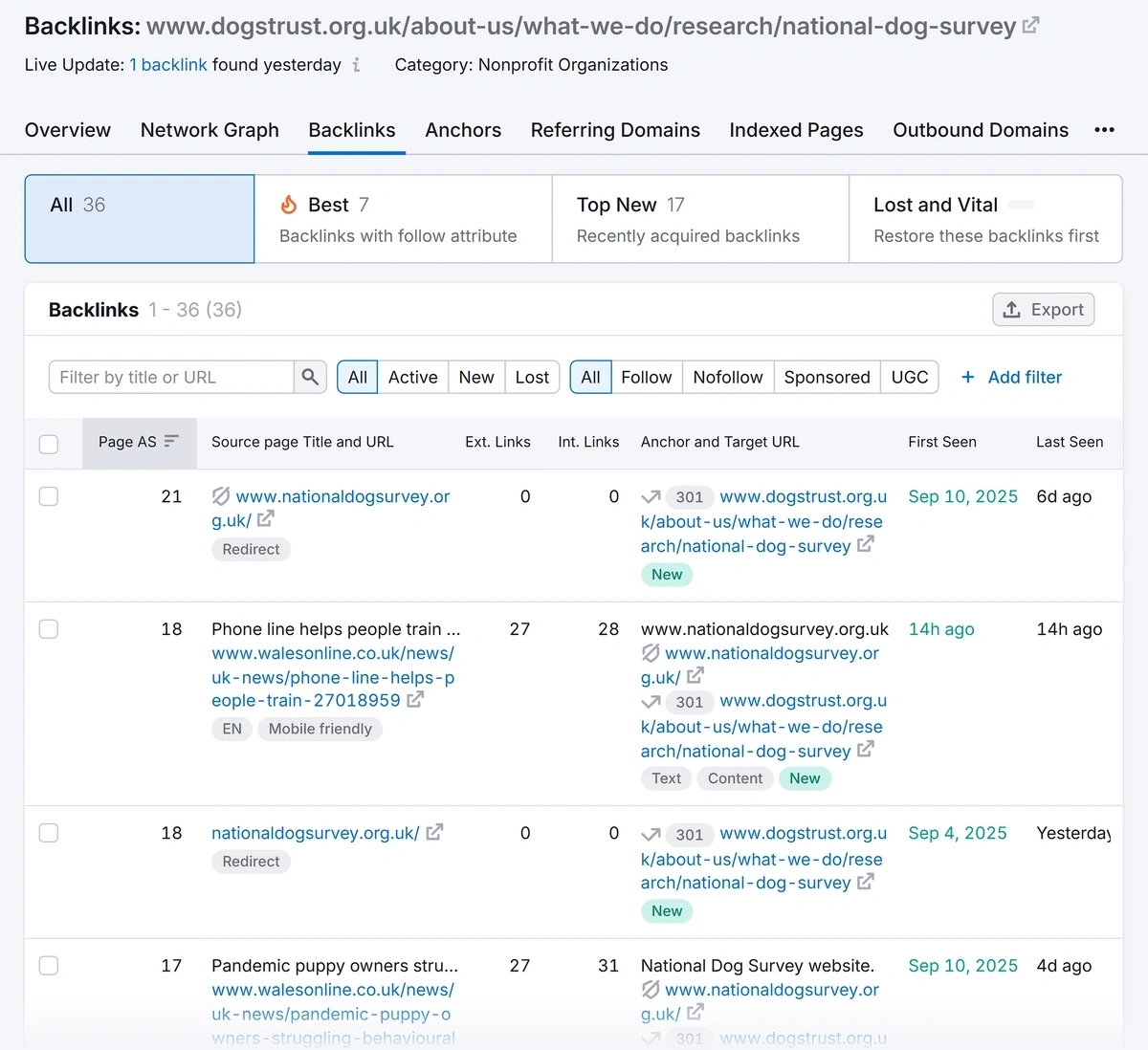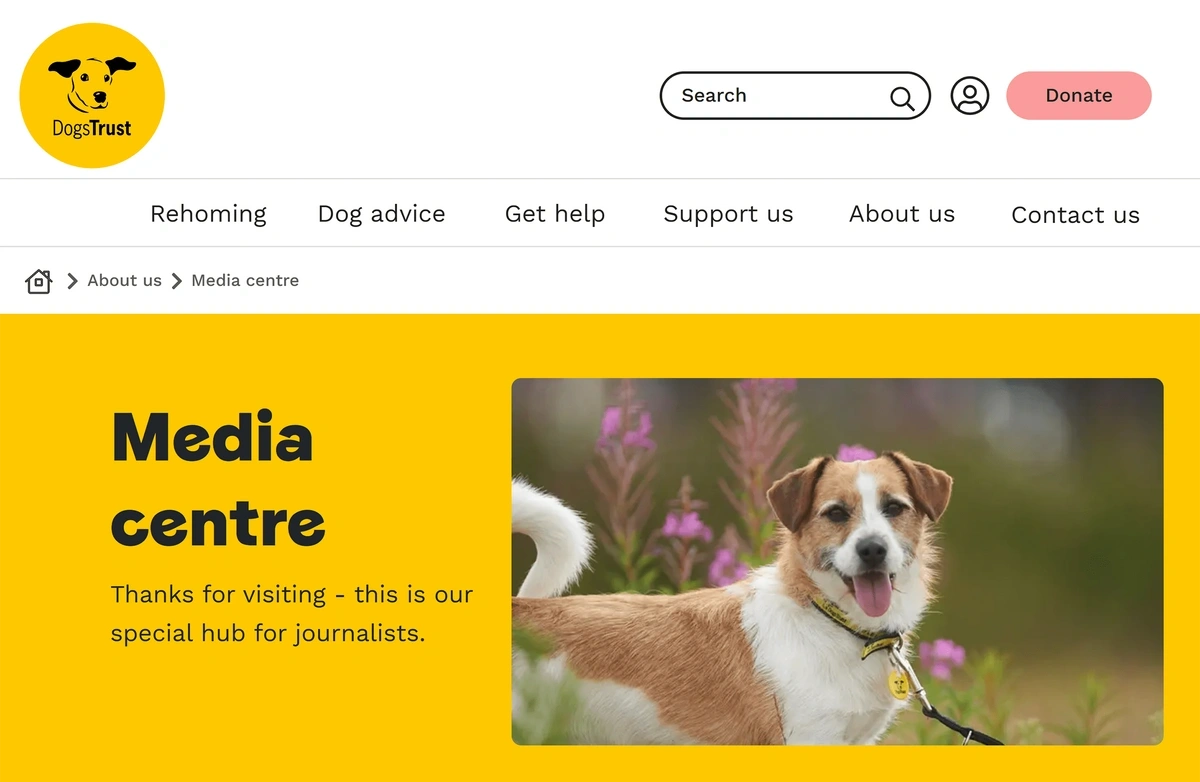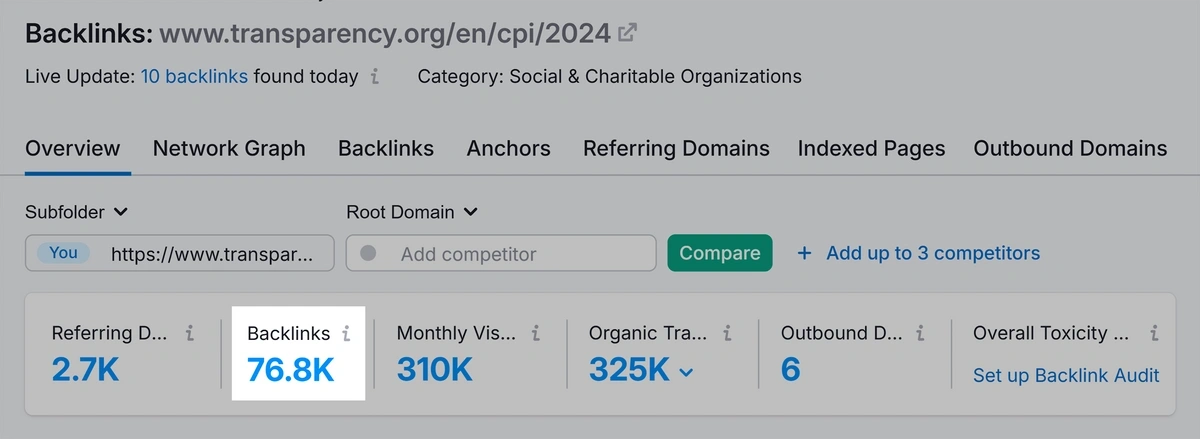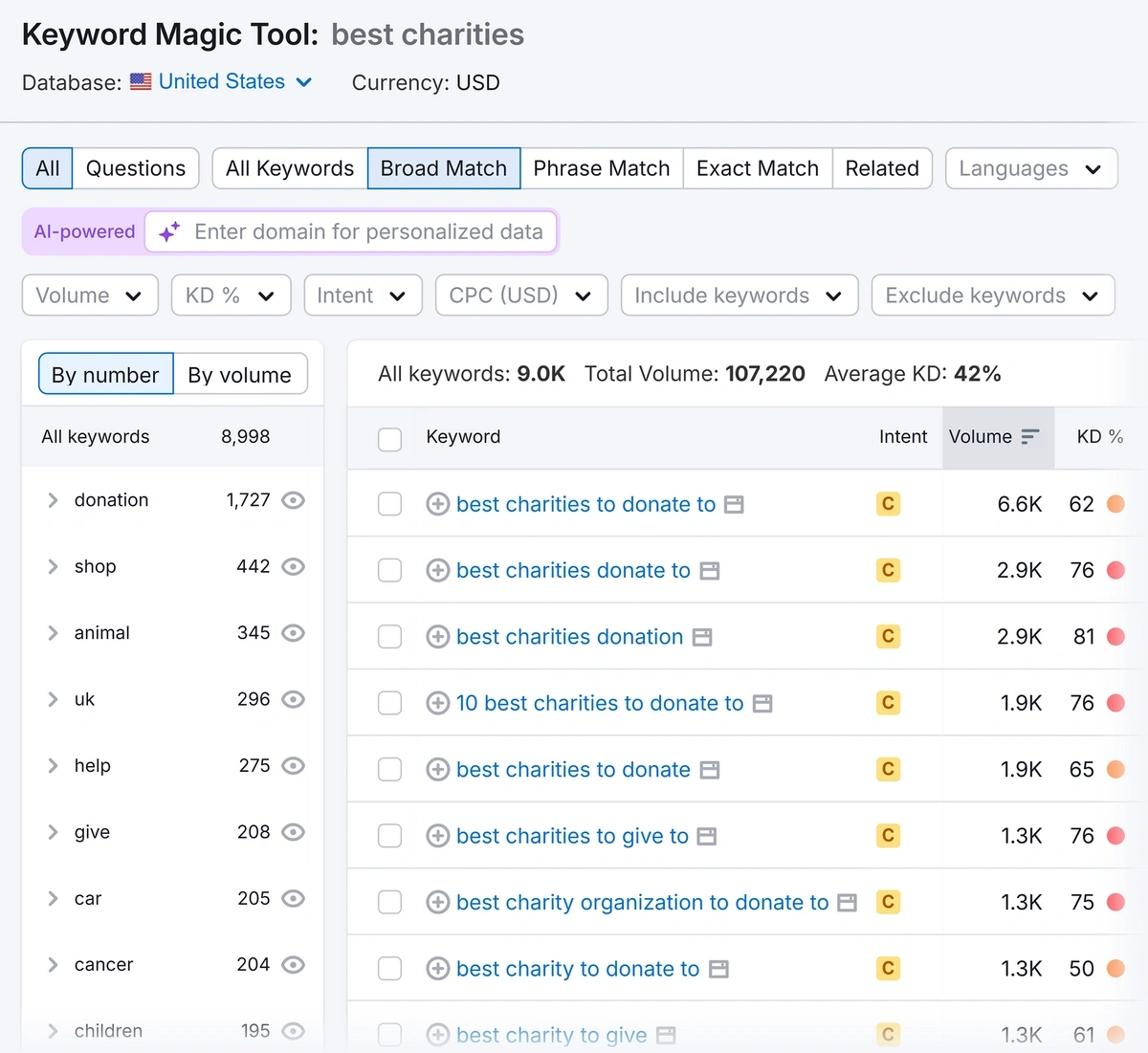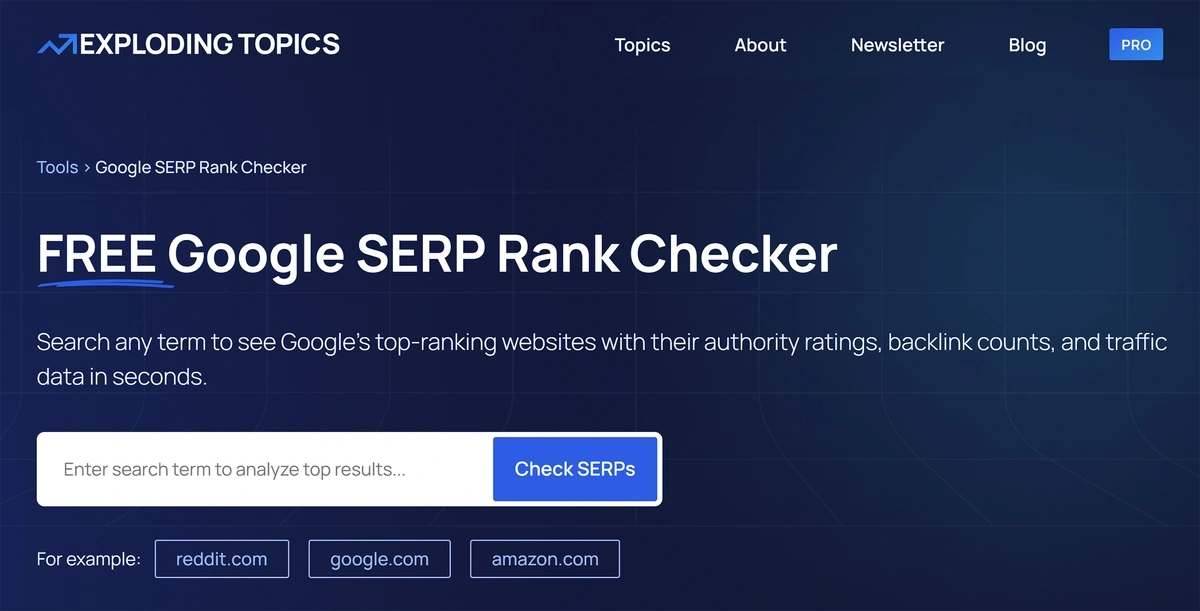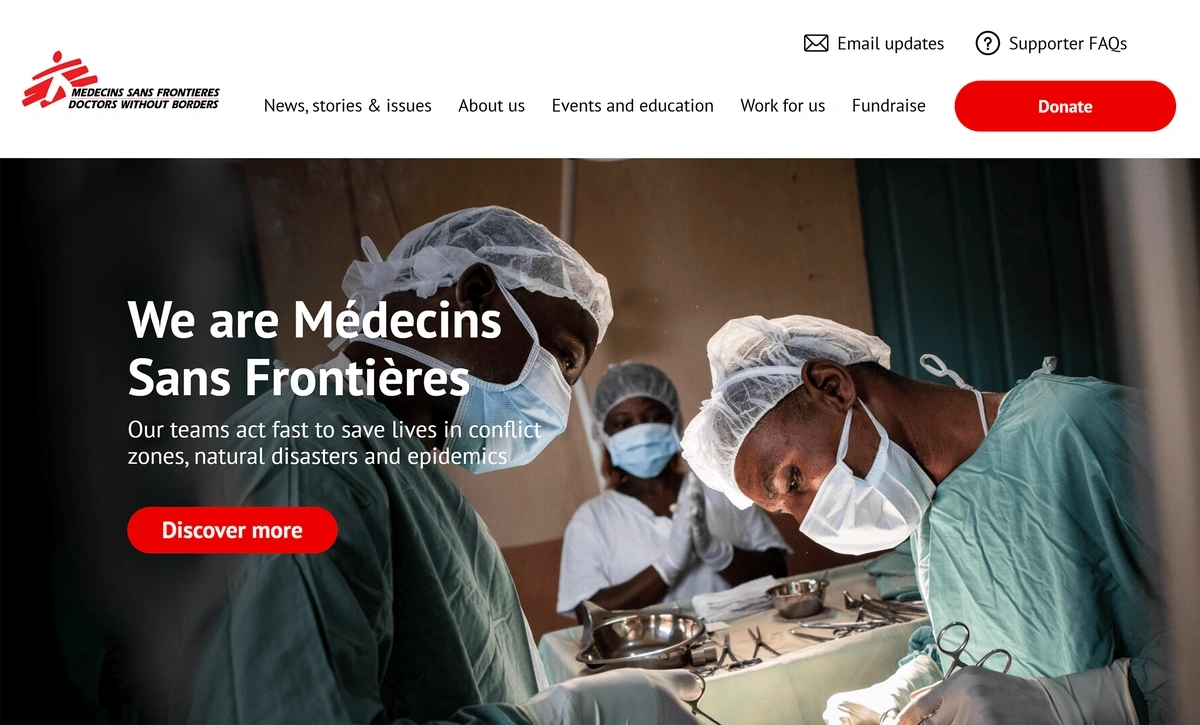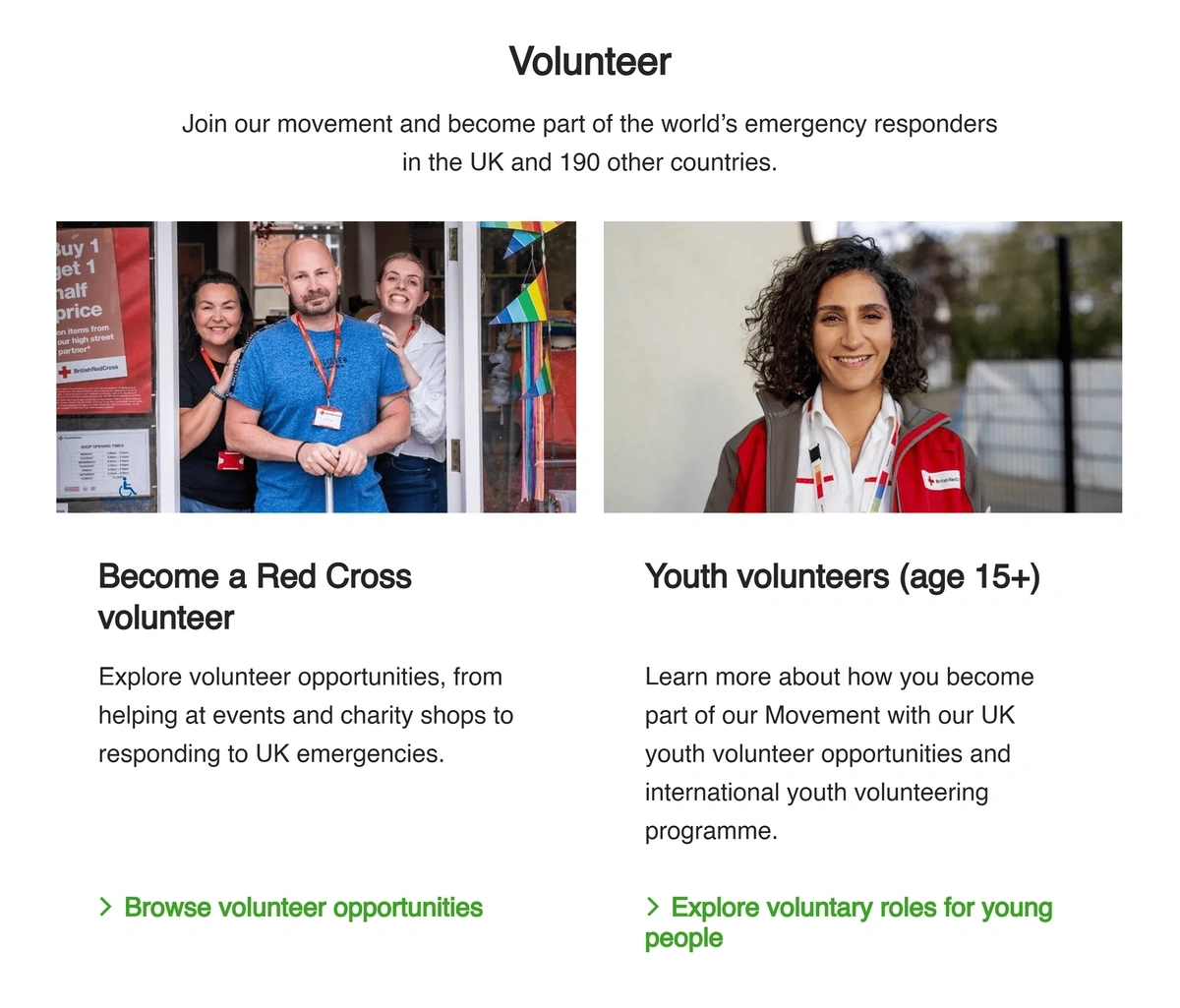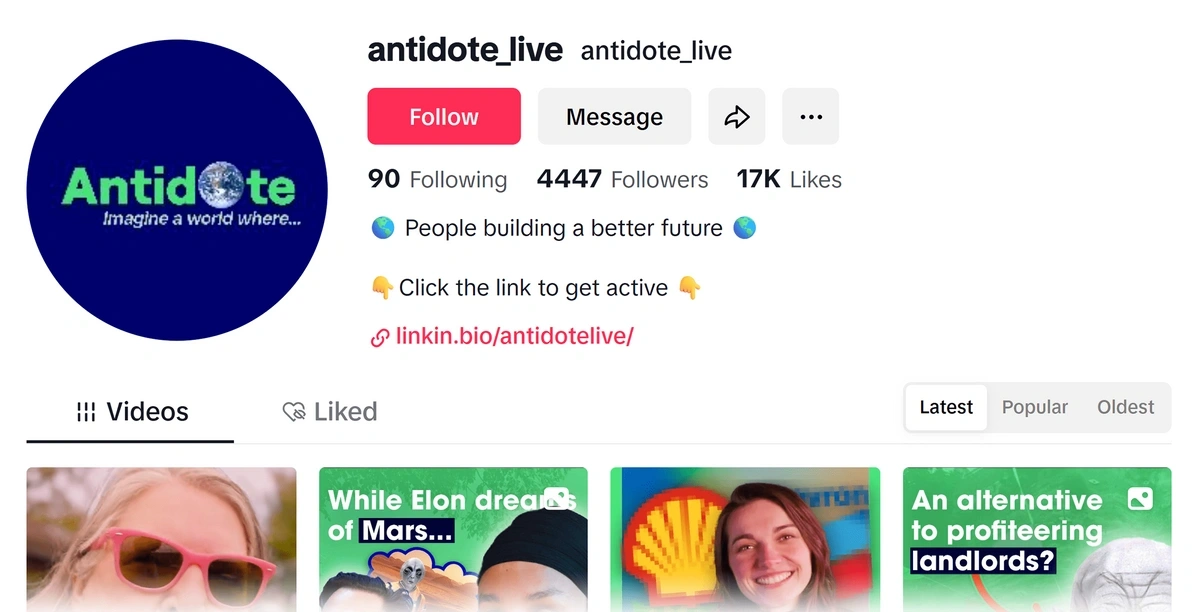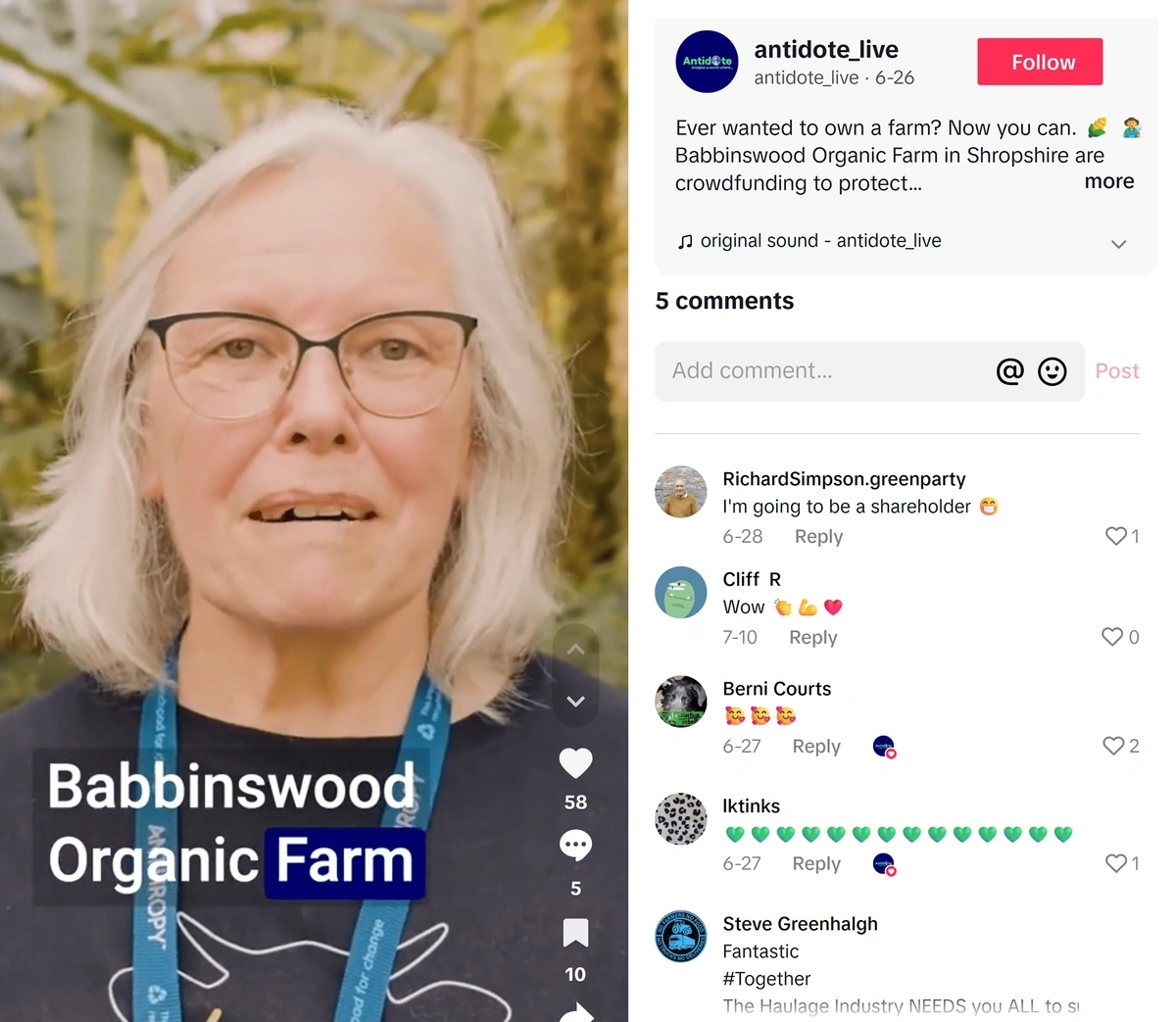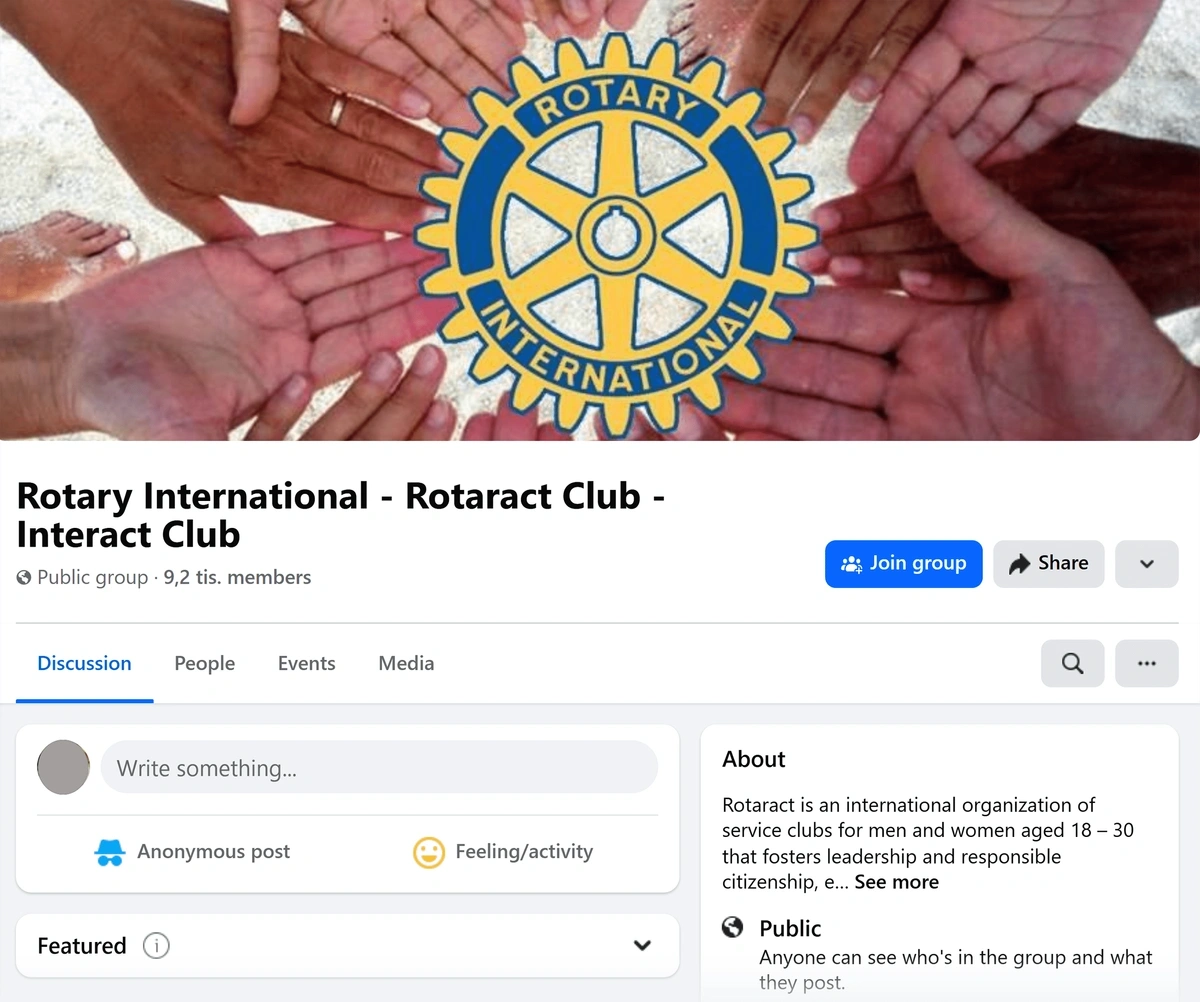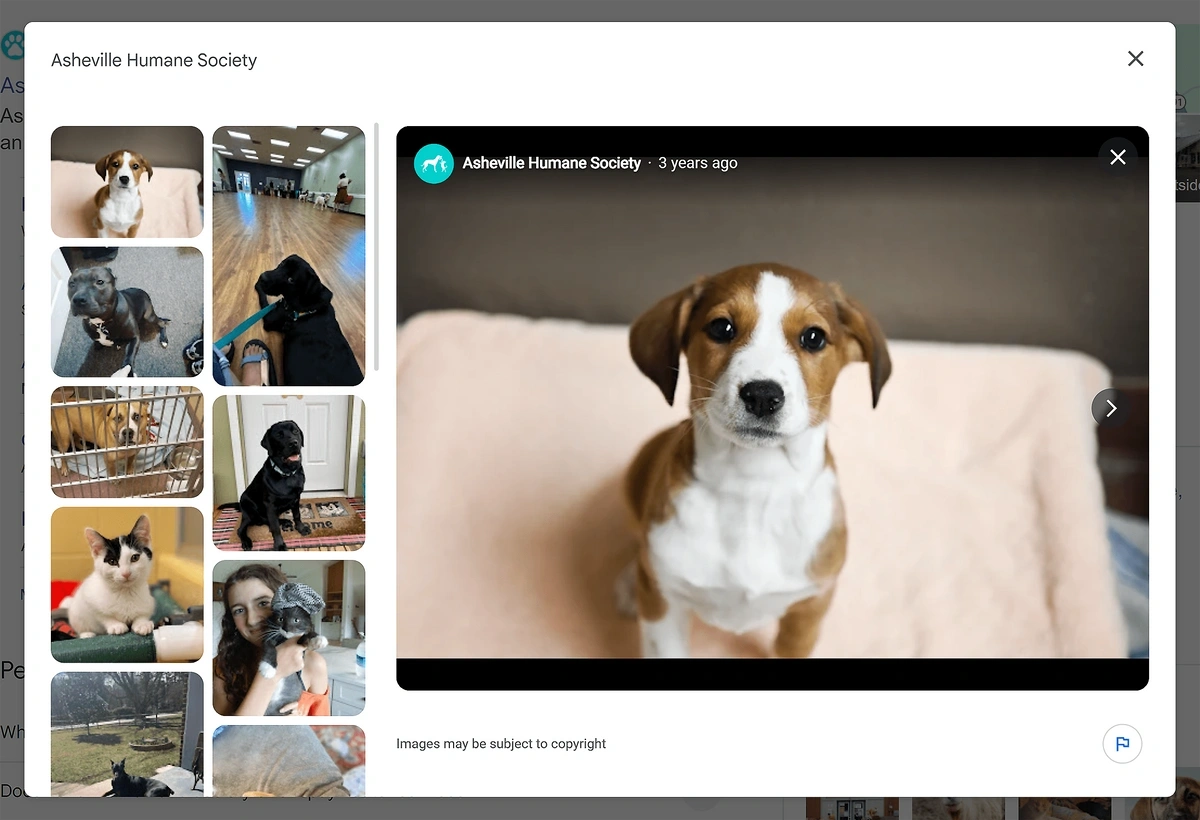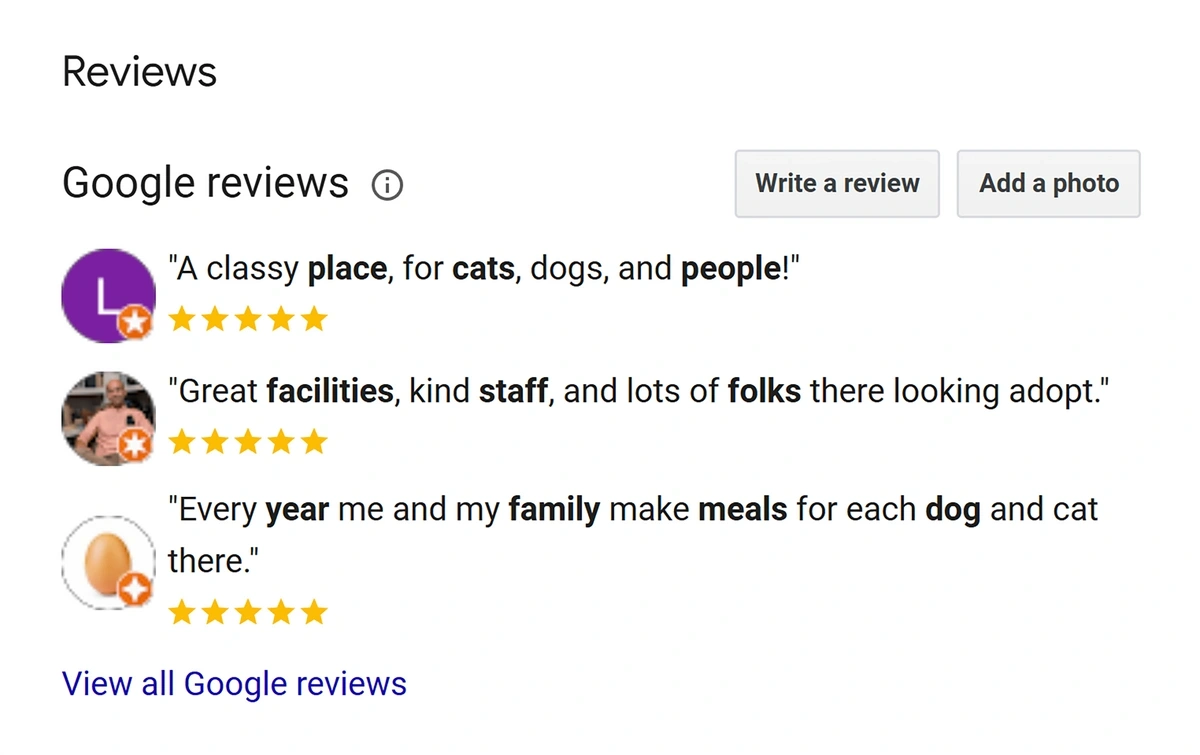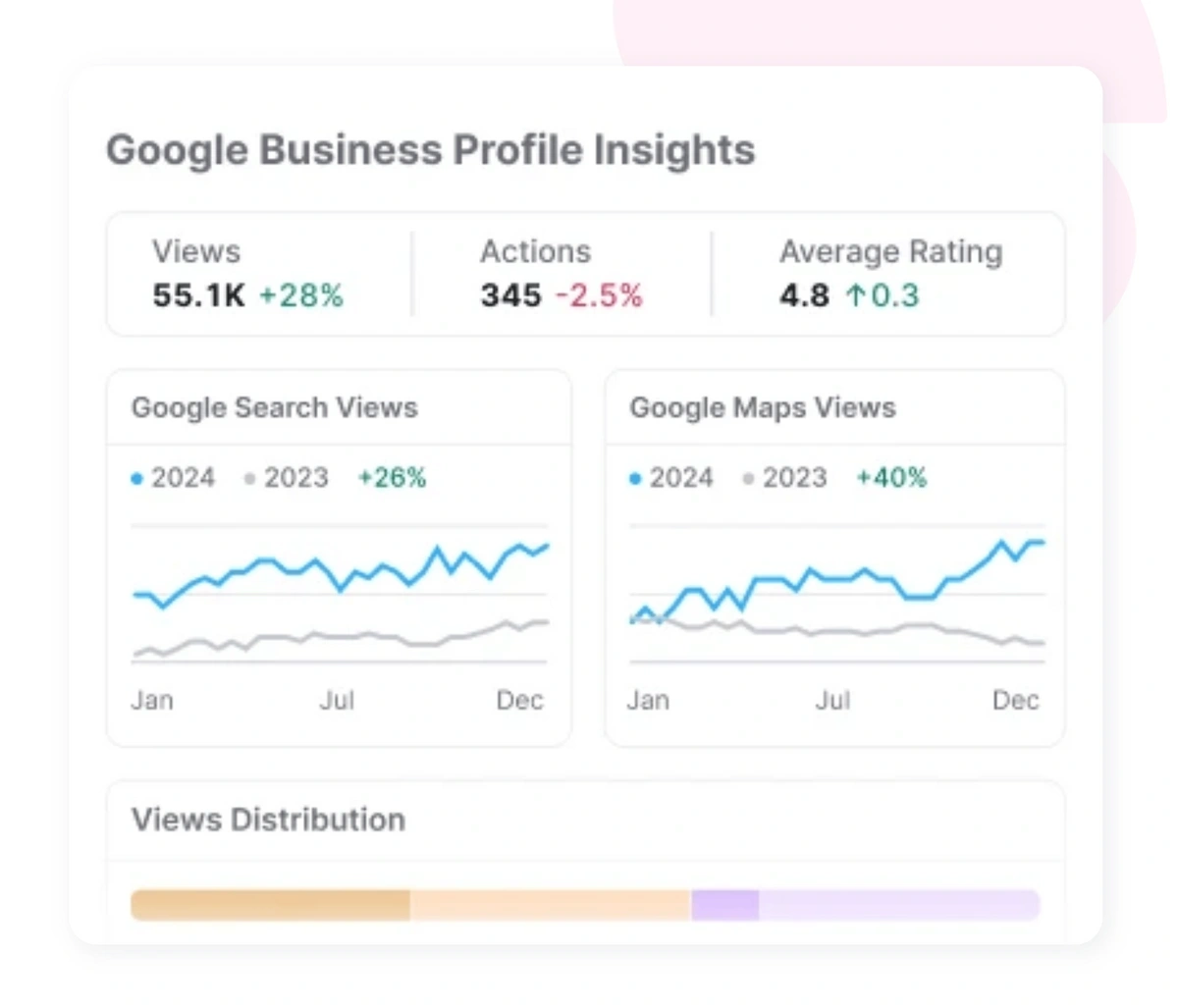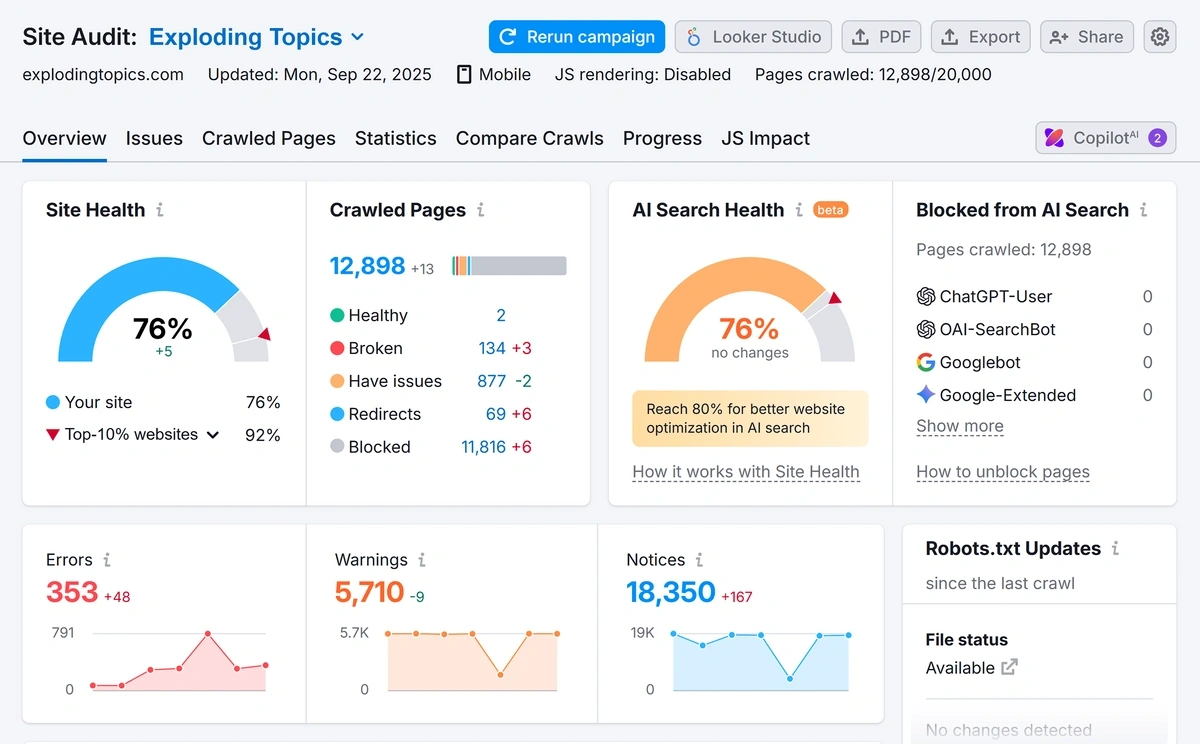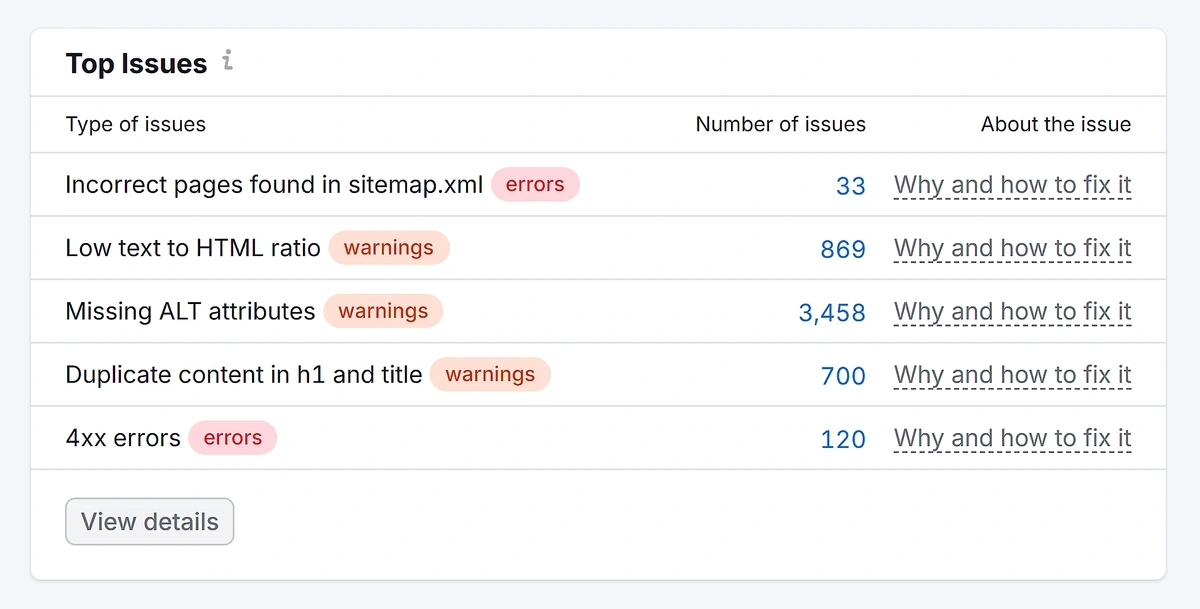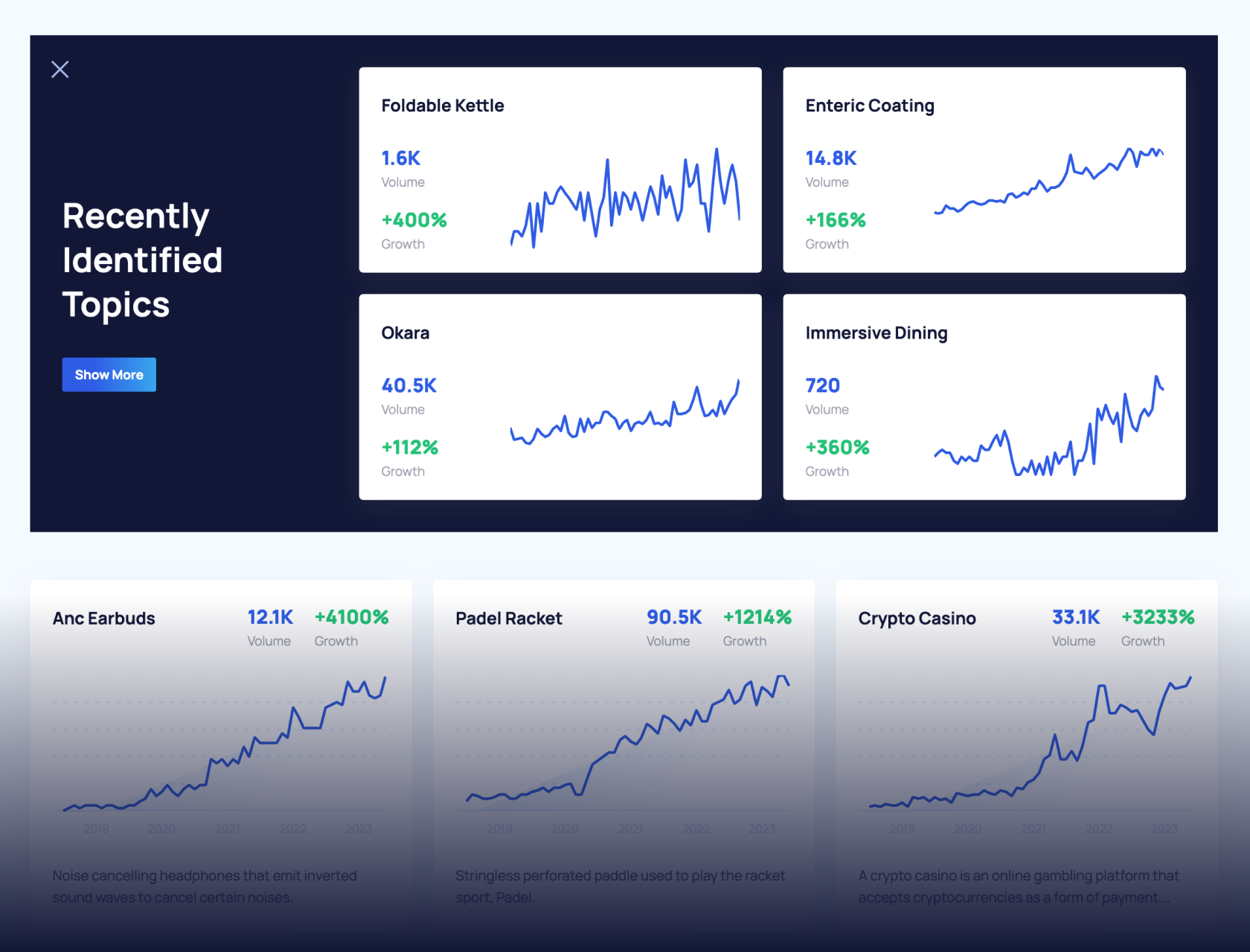
SEO for Nonprofits: How to Get Visibility for Your Cause
Your nonprofit can harness SEO to meet and exceed fundraising goals.
And SEO is important for nonprofits for the following reasons:
- Largest traffic referrer: Google is still the largest traffic referrer, responsible for 63.41% of all web traffic. That means the majority of your supporters will find you via Google.
- Conversions and revenue: Because of Google’s continued dominance, nonprofits need SEO to capture mindshare and maximize growth.
Many of my recommendations for optimizing content for AI search engines (like ChatGPT) overlap with good SEO.
The strategies I use allow nonprofits to be an authoritative source that AI systems reference and recommend.
With over 10 years of experience serving nonprofits in Washington, D.C., I’ve seen firsthand how a smart SEO strategy can send qualified traffic and engagement soaring.
Higher rankings and good EEAT lead to citations on other websites. This can increase awareness among potential supporters and can influence how Google and AI perceive the trustworthiness of your cause.
Get More Search Traffic
Use trending keywords to create content your audience craves.
1. Find Relevant Keywords to Target
First, decide which keywords you want your nonprofit to rank for in Google.
Think about your organization’s goals and programs. Jot down a rough list of topics that might be interesting to donors and supporters.
If you’re stuck, you can use ChatGPT to help generate keyword ideas.
Next, use SEO software to obtain insights that will aid your keyword research.
My platform of choice is Semrush, which I’ve been using for years. You can take advantage of the free 7-day trial to follow along.
If you prefer to use free software, you can replicate most of these examples with our free growth tools.
Target Keywords That Are Easy to Rank For
With SEO software, you can identify keywords that are easy to rank for.
Let’s say your client is launching a new nonprofit promoting Benjamin Franklin’s life and works. The client would like to rank #1 in Google for searches for “benjamin franklin.”
However, using the Semrush Keyword Overview tool, we see that the keyword “benjamin franklin” is “Hard” to rank for.
So, in the left-hand menu of Semrush, click the Keyword Magic Tool.
This reveals over 40,000 related keywords.
Next, filter the list by Keyword Difficulty, choosing “Very easy” or “Easy”.
In this example, I set a custom range of 0-29% so I can see both groups at the same time.
The result after filtering: 1,000+ easy keywords, including:
- benjamin franklin 13 virtues
- benjamin franklin books
- benjamin franklin scholars
These long-tail keywords have less search volume than “benjamin franklin” but combined, the traffic adds up.
Additionally, ranking for a batch of long-tail keywords will put you in good stead to tackle the next Keyword Difficulty level: “Possible.”
You can track your progress using our free Website Rank Tracker.
Don’t have Semrush yet? Try our free Keyword Research Tool. It’s powered by Semrush data.
2. Target Seasonal Keywords
Consider whether there are seasonal keywords that are relevant to your nonprofit’s cause or fundraising events.
If you run seasonal programs to recruit volunteers, raise funds, or increase donations, it’s worth looking for matching keywords that will increase visibility.
Seasonal keywords are often easy to rank for. Examples of easy seasonal keywords I found with a quick search:
- Volunteer opportunities on Thanksgiving day
- Where to donate winter coats
- Where can I donate toys to for christmas
Create content that addresses these keywords and provides helpful information. This will help to bring in valuable seasonal traffic.
Build a winning strategy
Get a complete view of your competitors to anticipate trends and lead your market
3. Produce Content Driven By Expertise
As your nonprofit becomes a trusted source, it’ll become more authoritative. This can help you to be ranked well in Google and cited in AI search.
Producing and publishing original content is a great way to boost EEAT and information gain.
For content ideas, consider:
- Advice and signposting content
- Supporter or project case studies
- Trends in the news or on social media
- Thought leadership articles from senior team members
- Original research, like supporter or visitor surveys
Examples of Nonprofits Using Original Research
The Dog’s Trust is an example of a charity that conducts its own research and has a section on its website dedicated to its findings.
It recently conducted the UK’s largest survey on dog ownership. It produced a report on its website that includes some fun, citable statistics.
After 2 weeks, the survey ranks for 400 keywords and has many high-quality, dofollow backlinks from regional news websites.
For digital PR, The Dog’s Trust also has a dedicated section for journalists on its website, making news and reports easy for the media to find:
Also, see Transparency International’s Corruption Perceptions Index, which is a global reference point. Their 2024 report garnered over 76,000 backlinks.
Keep in mind: Your nonprofit doesn’t need to be big or well-known to get research or survey results published on major news sites. I’ve seen tiny teams accomplish this.
Want to Beat Your Competition?
Find out who’s linking to them and build a better backlink strategy.
4. Request Inclusion on Nonprofit List Posts
Popular listsicles about nonprofits can drive traffic, which then converts into donations.
Identify relevant content with high traffic and request inclusion and a “dofollow” link.
Start by looking for keywords that include “best charities” or “top charities”. Then filter by using the Semrush Keyword Magic Tool.
Adding a niche keyword helps because you’ll find lists that are easier to garner inclusion in.
Also, try our free SERP Rank Checker. Simply add your keyword to see an overview of the top ranking results.
Once you find lists that are relevant to your nonprofit, reach out to the site owner and ask if they’ll consider including you.
Focus on the sites ranking for high-volume keywords since those could send the most visitors.
5. Optimize Your Website for Action
Is your nonprofit site designed to make it easy for users to take action to support causes they feel passionate about?
Depending on the nonprofit’s programs and the visitors’ varied intents, they may be looking for:
- Community involvement or volunteer opportunities
- An introduction to the organization’s work or ideas
- A chance to explore the cause in-depth
- In-person or online events
- Newsletter signup
- Information on donating
A simple site structure with clear CTAs is crucial.
Here’s an example from Médecins Sans Frontières (Doctors Without Borders): clear CTAs on the homepage allow for quick donations.
The website for the British Red Cross clearly lays out all donation, volunteering, and fundraising options on a single page:
Work with a website developer to make important actions easy for your visitors. This will reduce friction and help you to get more support.
7. Use Social Media Strategically
Social referral traffic is often a core part of SEO strategy. And social media can be a powerful way to find and attract supporters.
One option is TikTok, which allows supporters to see what your nonprofit is working on via short videos and livestreams.
You can take inspiration from Antidote Live, who publish videos on causes and crowdfunders:
Their short videos encourage viewers to get involved with specific causes in their local area.
Platforms like Facebook have SEO baked in and are ideal for sharing the impact of your nonprofit and fostering community through photos and videos of related activities.
Facebook Groups are perfect for grassroots organizations that want to build a strong, engaged community.
Did you know? You can opt in to the Semrush Social Media Toolkit. This provides posting scheduling, automations, analytics, and more in a single dashboard.
8. Work on Local SEO
If your client’s nonprofit is local or has local branches, then be sure to set up an optimized Google Business Profile. This can boost the nonprofit’s visibility in search results and in Google Maps.
It’s not necessary to have a physical location. As long as you are active locally, you can create a profile for your nonprofit.
To optimize your profile:
- Make sure it’s categorized correctly as a nonprofit organization.
- Fill out all relevant fields in the sign-up form.
Then add appealing photos. These could be of staff, events, volunteers, and your location.
The more complete your profile is, the better.
The Asheville Humane Society’s profile includes countless images of adorable pets as well as owners with their new adoptions.
After creating your profile, your nonprofit will be automatically listed on Google Maps.
To boost your local ranking, request Google Reviews. For instance, you can program automated emails to be sent to donors, volunteers, and event attendees.
Each profile, like the one below for the Asheville Humane Society, includes highlights of Google Reviews, as well as the number of reviews and the average star rating.
Be sure to keep your contact information (and hours, if you list them) up to date.
Making regular posts can also help. Posts can be as simple as a new photo, a quote, a holiday message, or an event announcement.
If you’re already using Semrush, it makes sense to take advantage of the Semrush Local dashboard.
This provides a single interface to optimize your profile, manage reviews, and list your nonprofit in online directories.
Additionally, you’ll receive analytics to track progress for your clients.
9. Check Technical SEO
Don't overlook basic technical SEO checks for your nonprofit.
You can perform a technical audit using either Google Search Console or the Semrush Site Audit tool.
To use the Semrush Site Audit, simply add the domain you want to analyze.
You’ll get a clickable overview of Site Health and issues.
Be sure to look for any site indexing or crawlability issues.
I find the Top Issues panel helpful. You can use it to prioritize actions. For each issue listed, there’s a clickable “Why and how to fix it” link.
Next, use Google PageSpeed Insights to check the loading speed of main pages and browse the recommended improvements.
Many top-ranking articles on nonprofit SEO emphasize site loading speed, but this is somewhat outdated.
It’s not that site loading speed isn’t important, but a lot of progress has been made since Google put a premium on speed years ago. Now, Google has pared back this emphasis.
The nuance with site loading speed is that it’s relative to your competitors and the quality of your content. Regarding ranking impact, quality will nearly always trump speed, unless your site has serious performance issues.
That said, it’s common to find easy speed wins by:
- Hosting fonts locally
- Reducing huge image file sizes
- Minifying JavaScript and CSS
Moving Forward With Nonprofit SEO
SEO is an affordable way for nonprofits and charities to expand their reach and reach their goals.
To kickstart your SEO project, I recommend that you grab a free trial of Semrush and make the most of the entire platform for zero cost.
You can also use our free growth tools for nonprofit SEO planning any time you need a recap.
Stop Guessing, Start Growing 🚀
Use real-time topic data to create content that resonates and brings results.
Exploding Topics is owned by Semrush. Our mission is to provide accurate data and expert insights on emerging trends. Unless otherwise noted, this page’s content was written by either an employee or a paid contractor of Semrush Inc.
Share
Newsletter Signup
By clicking “Subscribe” you agree to Semrush Privacy Policy and consent to Semrush using your contact data for newsletter purposes
Written By


Sherrie Gossett has a knack for uncovering hidden trends and opportunities that others overlook, drawing on her extensive experien... Read more

